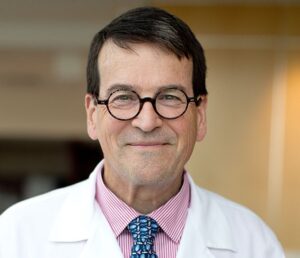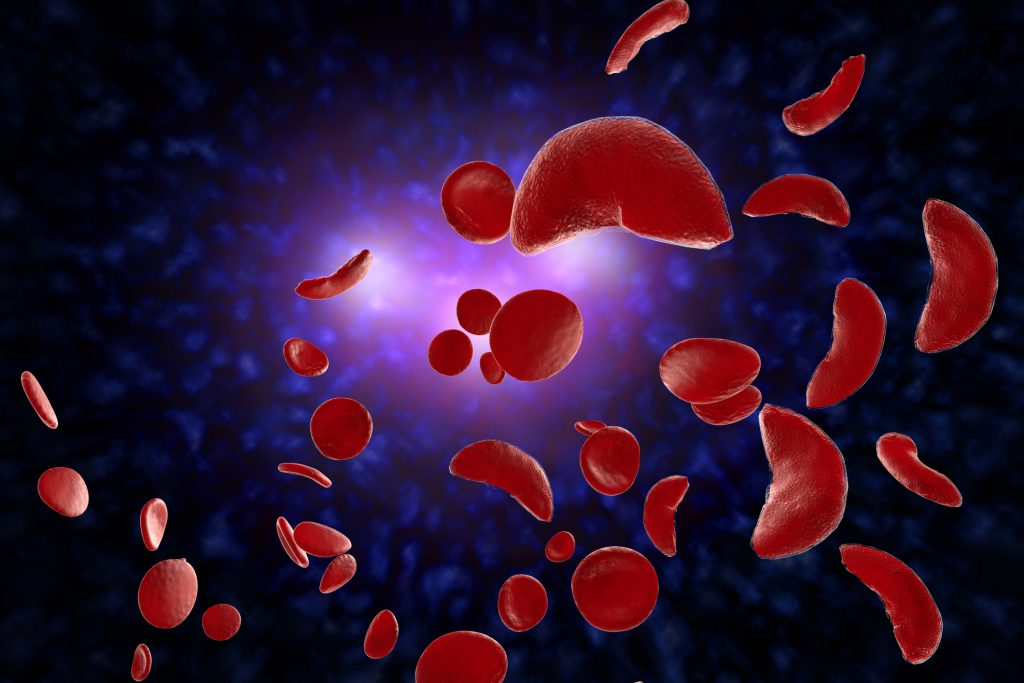
Boston Children’s Hospital/Harvard Medical School
LOS ANGELES — On the opening day of the American Society of Gene and Cell Therapy (ASGCT) conference—the largest gathering of cell and gene therapists to date—the Society’s 2023 Founders Award was presented to hematologist David A. Williams, MD. The chief of the division of hematology/oncology at Boston Children’s Hospital, delivered an absorbing review of decades of work at the forefront of stem cell research and clinical gene therapy.
This award is given to a scientist who exhibits “exceptional leadership, creativity, and innovation” in the field. Williams’ recognition followed the introduction of the award in 2022, when it was presented to another physician-scientist, former NIH director Francis Collins, MD, PhD.
In a talk titled, “The maturation of hematopoietic stem cell (HSC) gene therapy: Of mice and men,” Williams reviewed four decades of research and clinical progress. “I’m more a hematopoiesis and stem cell biologist” than a bona fide gene therapist, Williams said.
The Indiana native’s interest in gene transfer began in the early 1980s, working as a postdoc with Richard Mulligan at MIT. His initial work on HSC gene transfer in mice paved the way for early human trials, but the use of these first-generation γ-retroviruses was compromised by the incidence of leukemias due to insertional mutagenesis.
The subsequent development of lentivirus vectors by Luigi Naldini and colleagues resulted in higher efficiency of transfer and a broadening of disease indications. This has led to last year’s FDA approval of Skysona, Bluebird’s lentiviral therapy for X-linked cerebral adrenoleukodystrophy (CALD).
Williams summarized an impressive, sustained record of research excellence, including the cloning of interleukin-11 (leading to the first approved drug for thrombocytopenia); work on chemoresistance; the development of the first mouse model for X-linked chronic granulomatous disease, used in preclinical development; and gene transfer milestones in mouse models for severe combined immunodeficiency (SCID); and improved designs for viral vectors.
Williams also helped establish the Translatlantic Gene Therapy Consortium, which will next meet in Brussels at the European Society of Gene and Cell Therapy conference in October.
Human trials
In 2014, Williams and colleagues reported the development of an enhancer-deleted γ-retrovirus in the New England Journal. This markedly reduced insertions at the well-known chromosome 11 hotspot. Several clinical trials for X-linked SCID have shown promising results, including some who have been monitored for more than a decade.
But perhaps the most exciting project has been Williams’ work in sickle-cell disease (SCD), working in collaboration with his Boston Children’s colleague Erica Esrick, MD. The team developed an innovative “shmiR” vector that results in erythroid-specific expression of a short hairpin (sh)RNA embedded in a microRNA (shmiR stands for shRNA embedded in a microRNA architecture).
The cell processes this as an endogenous microRNA, Williams said. The resulting knockdown of BCL11A results in a significant induction of fetal hemoglobin (HbF), which has proven durable up to four years post treatment and counting. Furthermore, most circulating cells are found to contain HbF. (Esrick and Williams published this initial success in the same issue of the New England Journal as the landmark CRISPR gene editing trial sponsored by CRISPR Therapeutics and Vertex Pharmaceuticals.)
Williams described this approach as “a reversal of the physiological switch” (in which HbF expression is shut down shortly after birth). The result is the emergence of a population of cells with increased HbF and decreased HbS. By contrast, SCD patients treated with hydroxyurea show increased HbF but don’t turn down HbS in the red cells.
“This approach gives you two bangs for the buck,” Williams said. “This is remarkable!” After some delays, an NIH-funded phase II study is now enrolling patients.
Dealing with adversity
Despite the encouraging clinical stories in SCD, clinicians have also observed that SCD and other patients have heightened risks of leukemia after transplants. Notably, Bluebird bio had two SCD patients develop acute myeloid leukemia (AML), including one who did not exhibit vector insertion. This suggests that there’s something about SCD that might be causing an increased risk of leukemia.
With Mark Walters, MD, Donald Kohn, MD, and colleagues, Williams is keen to identify these predisposing factors. Does manufacturing or engraftment stress accelerate the acquisition of mutated HSC clones?
Using single-cell sequencing to monitor genomic damage during ex vivo treatment, Williams’ team has asked whether the baseline mutation burden is elevated in some SCD patients. In short, there does not appear to be an SCD-specific mutation process. While there is an increase in post-gene therapy driver mutations, the significance of that is unclear.
“Driver mutations do not predict hematological malignancy, but there may be mutations that affect fitness,” Williams said. A grad student in the Williams lab, Boya Liu, is testing various conditions to reduce damage to HSCs from SCD patients during in vitro manipulations.
Williams closed by discussing the recent approval of Skysona for CALD, a devastating X-linked disorder in which boys typically present around age five with progressive mental deterioration. More than 90% of treated patients are still alive. The first patient to receive the commercial product (Bluebird) was infused at Boston Children’s in March, Williams said, with several others in preparation.
Of the 67 patients treated, three have evolved to myelodysplastic syndrome. Williams and colleagues are busy studying those specific lentiviral insertion sites to better understand why this happened.
While the NIH has been essential to ongoing advances, Williams said, “we still need a business model to treat the rare disease patients that need to be treated.”


